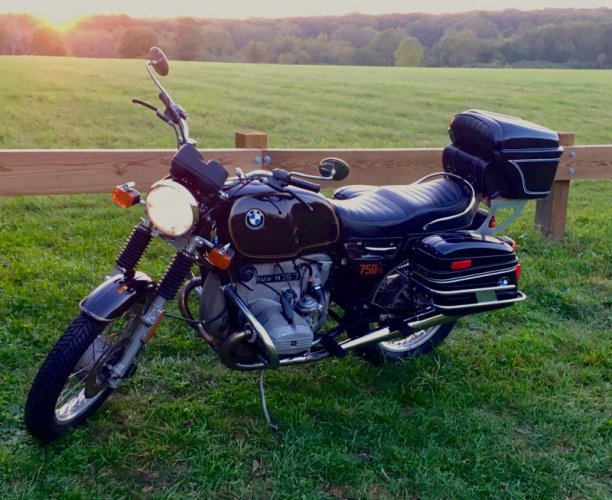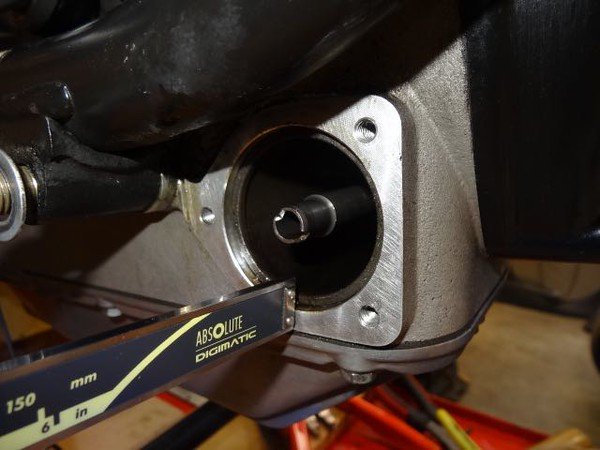Hi all,
I am new to the forum and a new airhead owner, that is, I have never owned a BMW airhead before. This is my introduction from the "Intro Thread" on this site:
I recently purchased a 1977 R75/7. I think she's a beautiful bike. My first BMW. Rides really nicely. A great balance of power and excellent handling. The bike came with a Bates fairing (I removed), the Bates bags in the picture and the Wixom Trunk (I will likely remove, but keep for long trips)
She's not perfect, of course, right now both carbs are weeping a small amount of gas (enough on the left side to spot my boot when I am riding.) I have never worked on Bing Carbs, so hope to learn through research (Clymers, ownwers manual, shop manual, airheads groups, etc) and hopefully with some assistance from airhead folks on this site. At a minimum the carbs need cleaning, possible rebuild? Thoughts? Also oil pan has a slight drip, collect right at bottom of pan and drips from there. Probably needs new gasket? Thoughts on this? I have spent the last week reading the boards here and have already found lots of great information to learn from. Thanks to the active members here for building out such a useful resource of information!
I am open to any other advice, guidance from classic airhead owners here. Like I said, I am just starting out as the owner of this bike. I want to treat her right. So am looking for any and all thoughts--to do's, don'ts and any other advice you might have.
Tonight I went for a sunset ride. Here's a picture of the bike.

Over time, as I learn, I hope to contribute back to these boards, as well.
Thanks in advance, Terry
I am new to the forum and a new airhead owner, that is, I have never owned a BMW airhead before. This is my introduction from the "Intro Thread" on this site:
I recently purchased a 1977 R75/7. I think she's a beautiful bike. My first BMW. Rides really nicely. A great balance of power and excellent handling. The bike came with a Bates fairing (I removed), the Bates bags in the picture and the Wixom Trunk (I will likely remove, but keep for long trips)
She's not perfect, of course, right now both carbs are weeping a small amount of gas (enough on the left side to spot my boot when I am riding.) I have never worked on Bing Carbs, so hope to learn through research (Clymers, ownwers manual, shop manual, airheads groups, etc) and hopefully with some assistance from airhead folks on this site. At a minimum the carbs need cleaning, possible rebuild? Thoughts? Also oil pan has a slight drip, collect right at bottom of pan and drips from there. Probably needs new gasket? Thoughts on this? I have spent the last week reading the boards here and have already found lots of great information to learn from. Thanks to the active members here for building out such a useful resource of information!
I am open to any other advice, guidance from classic airhead owners here. Like I said, I am just starting out as the owner of this bike. I want to treat her right. So am looking for any and all thoughts--to do's, don'ts and any other advice you might have.
Tonight I went for a sunset ride. Here's a picture of the bike.

Over time, as I learn, I hope to contribute back to these boards, as well.
Thanks in advance, Terry

